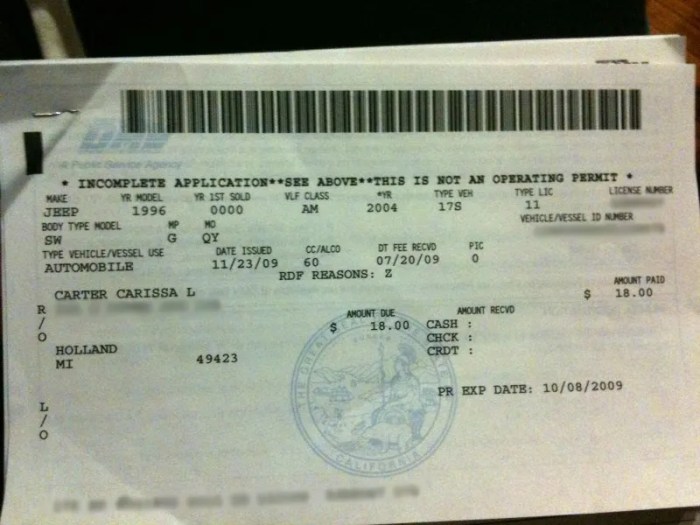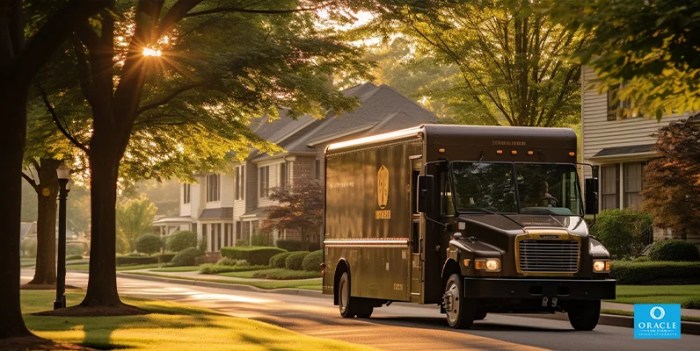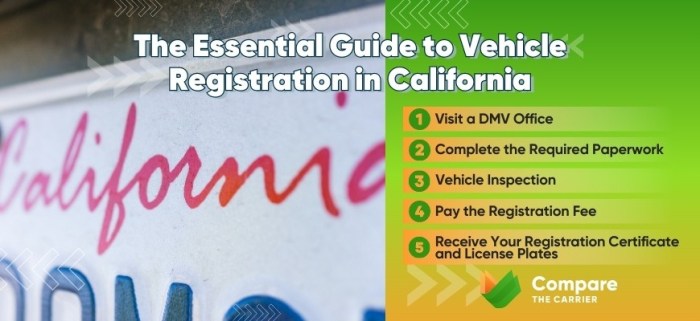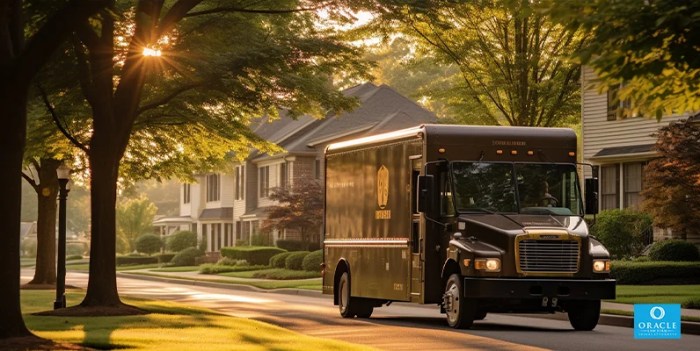How to register a commercial vehicle in California? It sounds kinda daunting, right? But honestly, it’s less of a bureaucratic nightmare and more of a mildly annoying puzzle. This guide breaks down the whole process, from understanding California’s crazy-specific vehicle classifications to navigating the DMV (which, let’s be real, is its own kind of adventure). We’ll cover everything you need to know to get your commercial wheels rolling legally in the Golden State, so grab your coffee and let’s dive in!
Registering a commercial vehicle in California involves several key steps. First, you’ll need to determine the correct classification for your vehicle based on its weight and intended use. This classification will determine the required documentation and associated fees. Next, gather all necessary documents, including proof of ownership, insurance, and emissions testing results. Once you’ve got your paperwork in order, you can begin the registration process, either online or in person at a DMV office.
Remember to factor in the various fees and taxes associated with commercial vehicle registration, which can vary depending on your vehicle’s classification. Finally, ensure you meet all California’s commercial driver’s license (CDL) requirements if applicable, and understand the state’s regulations for operating commercial vehicles.
Understanding California Commercial Vehicle Classifications
Registering a commercial vehicle in California involves understanding the state’s classification system. This system categorizes vehicles based on their weight and intended use, directly impacting registration fees and required documentation. Failing to correctly classify your vehicle can lead to penalties and delays. Let’s break down the different classes and their associated requirements.
California Commercial Vehicle Weight Classifications
California categorizes commercial vehicles primarily by their gross vehicle weight rating (GVWR). This refers to the maximum safe weight of the vehicle when fully loaded, including the vehicle itself, passengers, cargo, and any attached equipment. Understanding your vehicle’s GVWR is crucial for accurate registration. The weight classes directly influence the registration fees you’ll pay.
So you’re figuring out how to register your commercial vehicle in California? It’s a bit of a process, involving paperwork and fees. But before you even think about registration, make sure your truck’s in good shape – because a major repair, like needing to find out the average cost to replace a truck turbocharger , could really throw a wrench in your plans.
After you’ve got that sorted, head to the DMV to finalize your California commercial vehicle registration.
| Weight Class | GVWR (lbs) | Example Vehicles | Approximate Annual Registration Fee (USD) |
|---|---|---|---|
| Class 1 | 6,000 lbs or less | Small delivery vans, pickup trucks used for commercial purposes (with appropriate modifications) | Varies depending on other factors; check DMV website for exact amount. |
| Class 2 | 6,001 lbs to 10,000 lbs | Larger delivery vans, some box trucks | Varies depending on other factors; check DMV website for exact amount. |
| Class 3 | 10,001 lbs to 14,000 lbs | Medium-duty box trucks, some refuse trucks | Varies depending on other factors; check DMV website for exact amount. |
| Class 4 | 14,001 lbs to 26,000 lbs | Heavy-duty box trucks, larger delivery trucks | Varies depending on other factors; check DMV website for exact amount. |
| Class 5 | 26,001 lbs and over | Semi-trucks, large delivery trucks, buses | Varies depending on other factors; check DMV website for exact amount. |
Note: The registration fees listed above are approximate and can vary based on factors such as the vehicle’s age, fuel type, and any additional fees or surcharges. Always consult the California Department of Motor Vehicles (DMV) website for the most up-to-date and accurate fee information. These fees are subject to change.
Additional Considerations Beyond Weight
While GVWR is the primary classification factor, other elements influence registration. For instance, vehicles used for hazardous materials transport require special permits and potentially higher fees. Vehicles operating in specific industries (like trucking) may have additional requirements, such as the need for a USDOT number and compliance with federal regulations. It’s crucial to research any industry-specific regulations that might apply to your commercial vehicle.
The Vehicle Registration Process Step-by-Step: How To Register A Commercial Vehicle In California

Registering a commercial vehicle in California can seem daunting, but breaking it down into manageable steps makes the process much clearer. This guide walks you through both the in-person and online options, providing a straightforward path to getting your vehicle legally on the road. Remember to always check the California DMV website for the most up-to-date information and forms, as requirements can change.
Gathering Necessary Documents and Information
Before you even think about heading to the DMV, you’ll need to gather all the necessary paperwork. This includes your proof of ownership (title), proof of insurance specifically for commercial vehicles, a completed application for registration (REG 343), and the appropriate fees. For certain vehicle types, you may also need additional documentation like smog certifications or weight certificates. Failing to have all the required documents will significantly delay the process.
It’s highly recommended to make a checklist to ensure you don’t forget anything.
The In-Person Registration Process at the DMV
Once you’ve gathered all your documents, you’ll need to visit a California DMV office. Scheduling an appointment online is strongly recommended to minimize your wait time. At the DMV, you’ll present your documents to a representative, who will review them for completeness and accuracy. They’ll then process your application and issue your registration and license plates. Be prepared to answer any questions the DMV representative may have regarding your vehicle and its intended use.
Online Registration Process
While not all commercial vehicle registrations can be completed entirely online, some simpler cases might allow for partial online processing. You’ll likely need to create an account on the DMV website and complete a portion of the application online. However, it’s crucial to check the DMV’s website for eligibility criteria, as this varies depending on the vehicle type and registration status.
Even if you start online, you may still need to visit a DMV office to complete the process.
Flowchart Illustrating the Registration Process, How to register a commercial vehicle in California
Imagine a flowchart with these steps:
1. Start
So you’re looking to register your commercial vehicle in California? That involves a bunch of paperwork, but before you hit the DMV, make sure your truck is up to snuff, especially if you plan on any off-road adventures. Check out this guide on how to reinforce a truck frame for off-roading to avoid any costly repairs later.
Once your truck’s ready, you’ll be all set to tackle the California DMV registration process.
The process begins with the need to register a commercial vehicle.
2. Gather Documents
This box connects to the next, “Verify Documents.”
3. Verify Documents
This box has two outgoing arrows: “Documents Complete” and “Documents Incomplete.” “Documents Incomplete” loops back to “Gather Documents.” “Documents Complete” goes to “Choose Registration Method.”
4. Choose Registration Method
This box branches to “In-Person Registration” and “Online Registration.”
5. In-Person Registration
This leads to “Visit DMV,” then “Submit Documents,” and finally “Receive Registration.” “Receive Registration” connects to “End.”
6. Online Registration
This leads to “Complete Online Application,” which may loop back to “Gather Documents” if additional information is needed. Then it goes to “Potential In-Person Visit,” which leads to either “Receive Registration” (and then “End”) or back to “Complete Online Application” if further steps are needed online.
7. End
The successful registration of the commercial vehicle.
Fees and Taxes Associated with Commercial Vehicle Registration

Registering a commercial vehicle in California involves more than just filling out paperwork. Several fees and taxes contribute to the overall cost, and understanding these charges is crucial for budgeting purposes. These costs vary significantly depending on the vehicle’s weight, classification, and other factors. Failing to account for these expenses can lead to unexpected financial burdens.
The California Department of Motor Vehicles (DMV) Artikels specific fees and taxes for commercial vehicle registration. These primarily include registration fees, use taxes, and weight fees. The amount you pay depends heavily on your vehicle’s classification, weight, and whether it’s a new or used vehicle. Let’s break down the specifics.
Registration Fees
Registration fees cover the administrative costs associated with processing your vehicle’s registration. These fees are standardized across vehicle classes but can vary slightly depending on the type of vehicle and any additional endorsements needed.
Use Taxes
Use tax applies to vehicles purchased outside of California. It’s essentially a sales tax levied on the vehicle’s value. The rate varies by county and is calculated based on the vehicle’s purchase price. For example, a used truck bought in Nevada and registered in Los Angeles County would incur use tax based on Los Angeles County’s sales tax rate and the truck’s assessed value.
Weight Fees
Weight fees are determined by the gross vehicle weight (GVWR) of your commercial vehicle. Heavier vehicles incur higher weight fees, reflecting the increased wear and tear on California’s roads. These fees are designed to help fund road maintenance and infrastructure projects. The fee schedule is progressive, meaning the increase in fee is not linear with the increase in weight.
Fee Breakdown by Vehicle Classification
The following table provides a simplified example of fee breakdowns for different commercial vehicle classifications. Note that these are examples only, and actual fees may vary based on specific vehicle characteristics, county of registration, and current DMV rates. Always consult the official DMV website for the most up-to-date information.
| Vehicle Classification | Registration Fee (Estimate) | Use Tax (Estimate – Varies by County & Vehicle Value) | Weight Fee (Estimate – Varies by GVWR) |
|---|---|---|---|
| Class 2 (Light Truck) | $50 | Varies | $50 – $100 |
| Class 3 (Medium Truck) | $75 | Varies | $150 – $300 |
| Class 4 (Heavy Truck) | $100 | Varies | $300 – $1000+ |
| Class 5 (Large Truck/Bus) | $150 | Varies | $1000+ |
Understanding California’s Commercial Driver’s License (CDL) Requirements
Operating a commercial vehicle in California requires a Commercial Driver’s License (CDL), a specialized license with stricter requirements than a standard driver’s license. This is crucial for public safety, as commercial vehicles are significantly larger and heavier than passenger vehicles, posing greater risks in accidents. Obtaining a CDL involves several steps and demonstrates a higher level of driving proficiency.California’s CDL requirements ensure drivers are adequately trained and qualified to handle the responsibilities of operating large commercial vehicles.
These requirements are designed to minimize accidents and protect both the driver and the public. Failure to obtain the proper license can lead to serious penalties.
CDL Obtaining Process
To obtain a California CDL, applicants must meet specific requirements, including passing written and driving tests. Applicants must be at least 18 years old to operate intrastate commercial vehicles and 21 years old for interstate commerce. They must also pass a vision test, and a medical examination certifying their physical fitness to operate a commercial motor vehicle is mandatory.
The written test covers various aspects of safe driving practices specific to commercial vehicles, including vehicle inspection procedures, safe driving techniques, and regulations. The driving test assesses the applicant’s ability to safely operate the specific class of vehicle they intend to drive.
CDL Classes and Endorsements
California offers various CDL classes, each authorizing the operation of specific vehicle types. Class A CDLs authorize driving combination vehicles with a gross combination weight rating (GCWR) of 26,001 or more pounds, provided the towed vehicle has a gross vehicle weight rating (GVWR) of more than 10,000 pounds. Class B CDLs permit driving vehicles with a GVWR of 26,001 or more pounds, such as large buses or trucks that do not tow another vehicle.
Class C CDLs allow driving vehicles designed to transport 16 or more passengers, including the driver, or vehicles transporting hazardous materials. Endorsements add specialized driving privileges, such as transporting hazardous materials (H), operating passenger vehicles (P), or driving tank vehicles (N). For instance, a driver who needs to haul hazardous materials would require a Class B CDL with an H endorsement.
Consequences of Operating Without a Valid CDL
Operating a commercial vehicle without a valid CDL in California carries severe penalties. These can include hefty fines, license suspension or revocation, and even jail time depending on the circumstances and the severity of the offense. Furthermore, insurance companies are unlikely to cover accidents involving drivers operating without the proper license. The consequences extend beyond personal penalties; they can also impact employers who knowingly allow unlicensed drivers to operate their commercial vehicles.
Such actions can result in significant fines and damage to a company’s reputation. In short, operating a commercial vehicle without a valid CDL is not only illegal but also highly risky.
Compliance with California’s Commercial Vehicle Regulations

Navigating California’s commercial vehicle regulations can feel like driving through a dense fog, but understanding the key rules is crucial for avoiding hefty fines and maintaining a safe operation. This section Artikels the major regulations you need to know, covering size and weight limits, driver hours, safety checks, and the process for obtaining necessary permits.
California’s Department of Motor Vehicles (DMV) and the California Highway Patrol (CHP) enforce a comprehensive set of rules designed to ensure the safety of both commercial drivers and the public. These regulations go beyond simple registration and extend to every aspect of operating a commercial vehicle within the state.
Size and Weight Restrictions
California imposes strict size and weight limits on commercial vehicles to prevent damage to roads and bridges and to maintain safe operating conditions. Exceeding these limits can result in significant fines and delays. These limits vary depending on the type of vehicle and the route. For example, a longer combination vehicle will have different restrictions than a single-unit truck.
The DMV provides detailed information on permissible dimensions and weights, including axle weight limits and overall gross vehicle weight (GVW). It is essential to consult these resources before operating any commercial vehicle on California roadways. Failure to comply can lead to costly fines and potential vehicle impoundment.
Hours-of-Service Rules
California, in alignment with federal regulations, enforces strict hours-of-service rules for commercial drivers. These rules are designed to prevent driver fatigue, a major contributor to accidents. Drivers are limited in the number of hours they can drive within a specific timeframe, with mandatory rest periods incorporated to ensure adequate recovery. Electronic logging devices (ELDs) are frequently used to track driving hours, providing a digital record for compliance.
Violating these rules can lead to significant fines and potential suspension or revocation of a commercial driver’s license (CDL). For example, exceeding the maximum driving time without sufficient rest can result in penalties ranging from hundreds to thousands of dollars, depending on the severity of the violation.
Safety Inspections and Maintenance
Regular safety inspections are mandatory for commercial vehicles in California. These inspections cover various aspects of the vehicle’s condition, ensuring brakes, lights, tires, and other critical systems are functioning correctly. Failing to maintain a vehicle in safe operating condition or neglecting required inspections can lead to fines and potentially prevent the vehicle from operating legally. The CHP conducts random roadside inspections, and failing to meet safety standards can result in immediate removal from service until necessary repairs are made.
Furthermore, regular preventative maintenance is critical to avoiding costly repairs and ensuring compliance with safety standards. A well-maintained vehicle is less likely to experience breakdowns and mechanical failures that could lead to accidents or violations.
Common Violations and Penalties
Understanding common violations and their penalties is crucial for responsible operation.
Here are some examples:
- Overweight violations: Exceeding weight limits can result in fines ranging from several hundred to several thousand dollars, depending on the extent of the overload.
- Hours-of-service violations: Driving beyond permitted hours can lead to fines, suspension of CDL privileges, and potential jail time in severe cases.
- Safety inspection failures: Operating a vehicle with faulty brakes, lights, or other critical components can result in fines and vehicle impoundment until repairs are completed.
- Improper lane usage: Failing to adhere to lane restrictions for large vehicles can lead to tickets and fines.
- Logbook violations (for drivers using paper logs): Inaccurate or incomplete logbooks can result in significant penalties.
Obtaining Necessary Permits and Licenses
Operating a commercial vehicle in California requires specific permits and licenses beyond the standard CDL. These can include permits for hauling hazardous materials, operating oversized loads, or traveling on specific routes. The process involves applications, fees, and potentially background checks. The DMV website provides comprehensive information on the required permits and the application process for each. Failure to obtain the necessary permits before operating can lead to substantial fines and legal consequences.
For example, transporting hazardous materials without the proper permits carries significant risks and severe penalties, including potential environmental damage fines.
Resources for Further Information
Navigating the world of California commercial vehicle registration can feel overwhelming, but thankfully, there are numerous resources available to help you through the process. This section Artikels key contact information and online resources to simplify your search for answers and support. Remember, accurate and up-to-date information is crucial for compliance.Getting the right information is key to a smooth registration.
Knowing where to look for assistance and understanding the services available can save you time, money, and potential headaches down the line. This section provides a starting point for your research.
California Department of Motor Vehicles (DMV) Contact Information
The California DMV is your primary source for information regarding commercial vehicle registration. Their website offers a wealth of information, including downloadable forms, FAQs, and a comprehensive guide to commercial vehicle regulations. You can find their contact information, including phone numbers for various inquiries, mailing addresses for written correspondence, and a searchable database of DMV field offices throughout the state, on their official website.
They also offer in-person assistance at their various offices.
Other Relevant Agencies and Organizations
Beyond the DMV, several other agencies may be involved depending on the type of commercial vehicle you operate. For instance, the California Highway Patrol (CHP) enforces commercial vehicle regulations on the road, and their website offers resources related to safety and compliance. Depending on your industry, you might also find helpful information from professional organizations representing commercial drivers or trucking companies.
These groups often provide advocacy, training, and resources specific to their members’ needs.
Helpful Online Resources and Publications
The California DMV website is a goldmine of information. Look for their publications section, which likely contains detailed guides on various aspects of commercial vehicle registration, including specific requirements for different vehicle classes and types. Many third-party websites also offer information and guides, but always verify the information’s accuracy and currency against official DMV sources. Remember to be cautious about unofficial sites; always prioritize official government sources for the most accurate and legally sound information.
Third-Party Commercial Vehicle Registration Services
Numerous third-party services offer assistance with commercial vehicle registration. These services often handle the paperwork, filings, and other administrative tasks involved, potentially saving you time and effort. However, it’s crucial to thoroughly research any such service before engaging them, ensuring they are reputable and understand California’s specific regulations. Be aware that these services typically charge fees for their assistance, so factor those costs into your overall budget.
Always compare pricing and services offered before making a decision.
Illustrating Common Vehicle Types
California’s commercial vehicle landscape is diverse, encompassing a wide range of sizes and functionalities. Understanding the key differences between common vehicle types is crucial for proper registration and compliance. This section details three frequently registered commercial vehicles in California, highlighting their physical characteristics, weight capacities, and typical applications.
Semi-Truck
Semi-trucks, also known as big rigs or 18-wheelers, are the heavyweights of the commercial vehicle world. These vehicles are characterized by their powerful engines, substantial cargo capacity, and significant impact on highway transportation.
- Dimensions: A typical semi-truck cab measures approximately 8-10 feet in length, while the trailer can range from 28 to 53 feet, resulting in a total length exceeding 70 feet in many cases. Height typically ranges from 12 to 14 feet, depending on the load and trailer configuration. Width is generally consistent at around 8 feet.
- Weight Capacity: Gross Vehicle Weight Rating (GVWR) varies considerably, but commonly exceeds 80,000 pounds. This substantial weight capacity allows for the transport of large quantities of goods across long distances.
- Common Uses: Semi-trucks are predominantly used for long-haul freight transportation, carrying everything from consumer goods and raw materials to specialized equipment and hazardous materials. Their extensive reach and high capacity make them vital to the national and international supply chain.
Box Truck
Box trucks, also called cube vans or straight trucks, offer a versatile middle ground between smaller delivery vans and massive semi-trucks. Their enclosed cargo area makes them ideal for a variety of applications requiring protected goods.
- Dimensions: Box trucks come in a variety of sizes, but a common configuration measures approximately 16-26 feet in length, 8 feet in width, and 8-10 feet in height. These dimensions provide a substantial cargo area while remaining maneuverable in urban environments.
- Weight Capacity: GVWR typically ranges from 10,000 to 26,000 pounds, significantly less than semi-trucks but still capable of carrying considerable weight. This capacity allows for efficient delivery of smaller to medium-sized shipments.
- Common Uses: Box trucks are frequently employed for local and regional deliveries, moving services, and the transport of goods requiring protection from the elements. Their versatility makes them a popular choice for a wide range of businesses.
Delivery Van
Delivery vans represent the smallest of the three vehicle types discussed, prioritizing maneuverability and efficiency in urban areas. Their compact size allows for easy navigation through congested streets and tight spaces.
- Dimensions: Delivery vans are significantly smaller than box trucks or semi-trucks. Typical dimensions might range from 10 to 20 feet in length, 6-8 feet in width, and 6-8 feet in height. The exact dimensions depend heavily on the specific make and model.
- Weight Capacity: GVWR generally falls between 6,000 and 10,000 pounds, making them suitable for smaller deliveries and less bulky goods. Their lower weight also contributes to better fuel economy.
- Common Uses: These vehicles are commonly used for last-mile delivery services, courier services, and smaller-scale businesses that require frequent stops and maneuverability in urban environments. Examples include package delivery companies and local food delivery services.
Concluding Remarks
So, there you have it – the lowdown on registering your commercial vehicle in California. While it might seem like a lot at first glance, breaking it down into manageable steps makes the whole process much less intimidating. Remember to keep your paperwork organized, be prepared for potential wait times at the DMV, and always double-check you’re meeting all the requirements.
With a little patience and planning, you’ll be cruising the California highways in your commercial vehicle in no time. Now go forth and conquer that DMV!










